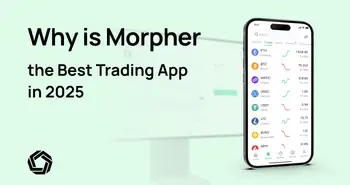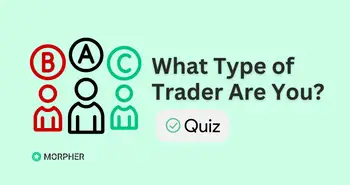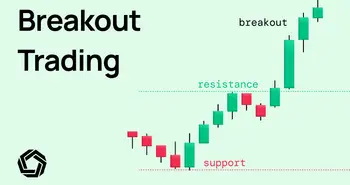Why Pay to Trade? Morpher Brings You Zero Commission Trading
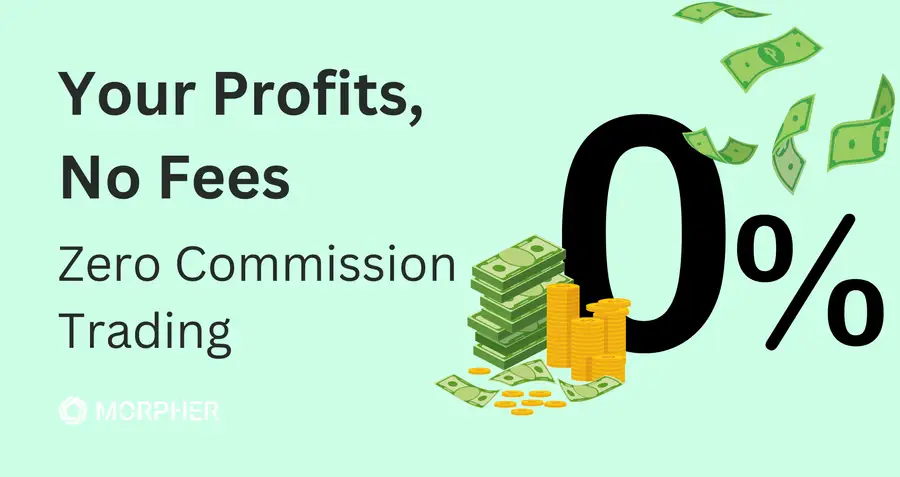
For years, traders have lived by the idea that “You can’t get something for nothing.” Commissions, fees, and slippage were seen as unavoidable costs of participating in financial markets.
Well, that is not the case anymore.
At Morpher, we believe the financial world shouldn’t be only a playground for the rich to get richer. It should provide opportunities for every type of investor, especially those willing to put their hard-earned dollars toward smarter decisions for their future, like investing. Yet, we know that setting aside money for investments isn’t always easy. Barriers like trading fees and hidden costs often discourage potential investors from reshaping their financial future.
That’s why Morpher is here: to break down traditional barriers and make trading accessible to everyone. To help you understand how zero commission trading works and how Morpher stands out, we’ve prepared this guide. It’s simple, transparent, and designed to show how the future of finance can work for every investor—no barriers, no catches, just opportunity.
What is Zero Commission Trading?
Zero commission trading is exactly what it sounds like, trading without the added costs of commissions. In traditional markets, brokers often charge fees for executing trades. These can come in the form of flat transaction fees or a percentage of the trade value. Over time, especially for active traders making frequent trades, these costs can quietly but significantly eat into your profits.

Casual investors aren’t spared either. Even a small fee for every trade can make a big difference when you’re investing smaller amounts or just starting out. Why should your potential gains take a hit before you’ve even seen them grow?
Low Fees Trading is Not Equal to Zero Commission Trading
At first glance, “low fees” might sound just as appealing as zero commission trading. But let’s be clear, low fees are still fees, and they can add up faster than you think. For high-frequency traders, even a tiny percentage or a few cents per trade can quietly chip away at returns over time.
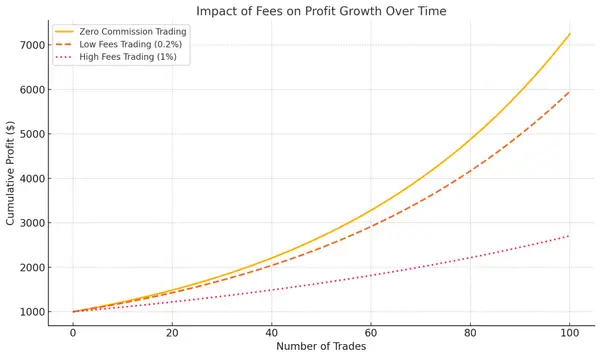
Think of it like buying concert tickets. The advertised price looks great, but by the time you check out, the service fees, processing fees, and other extras have inflated the total. Even though the “fees” are small, they leave a bad taste because they weren’t part of what you thought you were paying.
The same applies to low-fee trading platforms. While they promise smaller costs, those costs still take a bite out of every trade you make. And the more often you trade, the larger that bite becomes.
How Morpher Offers Absolutely Zero Commission Trading
Morpher takes absolutely no profit from your trades. There are no costs for trading on Morpher.
Unlike traditional trading platforms that depend on brokers, clearinghouses, and other costly intermediaries, Morpher eliminates these middlemen entirely. This streamlined system ensures that every trade settles directly, instantly, and at the quoted price—with no hidden fees or added costs.
What About Gas Fees? Can You Escape Them?
Gas fees on Morpher apply only to withdrawals, not to trading. This means your trading experience remains entirely gas-free, making it ideal for frequent traders.
Gas fees ensure your trades are validated and processed on the network. To simplify, think of gas fees like a toll on a highway: they’re necessary to access the blockchain, but they aren’t charged by Morpher itself. Instead, these fees go to the network, such as Polygon.
While completely escaping gas fees isn’t possible on any blockchain-based platform, Morpher minimizes their impact in several ways:
- No Gas Fees for Trading:
Gas fees only apply to withdrawals; trading on Morpher is completely gas-free. - Efficient Blockchain Choice:
Morpher primarily uses the Polygon network, known for its significantly lower gas fees compared to costlier blockchains like Ethereum. While Ethereum withdrawals are available, Polygon remains the best choice for users seeking minimal fees.
Is There Anything You Should Be Aware Of?
Trading on Morpher is simple and transparent. Morpher does not profit from your trades, but there are a few features in place to maintain the platform’s functionality and sustainability:
- Margin Interest (for Leverage):
When using leverage, a small 0.03% fee is charged daily. Morpher does not profit from this fee—the tokens are burned, reducing the total supply of MPH tokens. - Spreads:
Spreads help prevent arbitrage between virtual futures and their spot markets. They also contribute to the token economy by burning a small portion of MPH tokens with each transaction.
How Does Morpher Make Money?
As a company, it’s only natural that we need a sustainable revenue model to ensure our future—but we believe that burden should never fall on our users.
Morpher’s funding comes from its token-based system. Each day, a small percentage (0.015%) of the total supply of Morpher tokens (MPH) is newly minted to reward the platform for operating the protocol.
This innovative model allows Morpher to provide commission-free trading while ensuring long-term sustainability. It’s a system designed to empower traders, not profit off them, staying true to our commitment to fairness and transparency.
Beyond Zero Commissions: What Morpher Offers
Morpher doesn’t just stop at zero commission trading. Its platform is packed with features designed to make investing accessible, secure, and flexible for everyone:
- Fractional Investing:
Invest as much—or as little—as you want. With Morpher, even small amounts can buy fractional shares of assets like gold, stocks, or crypto, making markets accessible to all. - Blockchain-Powered Trust:
Built on blockchain, Morpher guarantees that every trade is secure, transparent, and tamper-proof. You can easily verify transactions through the Morpher Scan for detailed insights. - Wide Market Variety with Leverage:
Trade across diverse markets, including stocks, commodities, and crypto, all on a single platform. With up to 10x leverage, you can amplify your market exposure while enjoying protection from negative balances. - Negative Account Protection:
Unlike traditional platforms, Morpher ensures you never lose more than your initial investment, giving you peace of mind even when markets fluctuate.
A Message from Morpher
We’ve explained how our zero-commission trading system works, and while it’s simple, we know that many platforms make similar promises. That’s why we encourage you to experience Morpher for yourself. Download the top app for zero-commission trading, or explore the desktop version for a seamless trading experience!
With zero fees and zero commissions , you can see exactly how Morpher works—test it out with no risk attached. Plus, we’re offering you a welcome bonus to help you get started. Trade crypto, stocks, commodities, forex, and unique markets—all with zero commission.

Disclaimer: All investments involve risk, and the past performance of a security, industry, sector, market, financial product, trading strategy, or individual’s trading does not guarantee future results or returns. Investors are fully responsible for any investment decisions they make. Such decisions should be based solely on an evaluation of their financial circumstances, investment objectives, risk tolerance, and liquidity needs. This post does not constitute investment advice.

Painless trading for everyone
Hundreds of markets all in one place - Apple, Bitcoin, Gold, Watches, NFTs, Sneakers and so much more.

Painless trading for everyone
Hundreds of markets all in one place - Apple, Bitcoin, Gold, Watches, NFTs, Sneakers and so much more.

